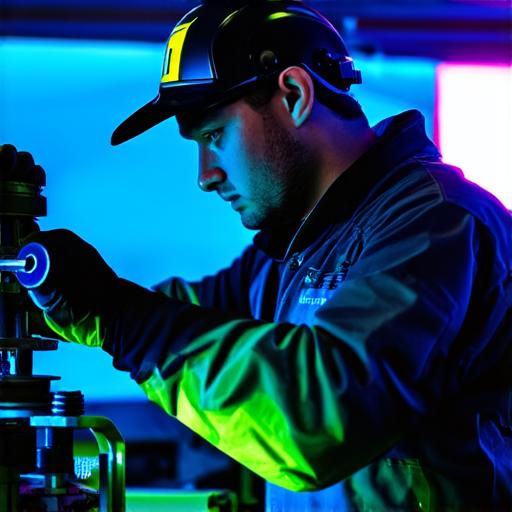Design and Prototyping
The first stage in creating VR headsets is design and prototyping. This stage involves designing the headset’s shape, size, weight, and features based on the target audience’s needs and preferences. The prototype should be tested to identify any issues or areas that need improvement before moving to the next stage.
Manufacturing Process
The manufacturing process involves several stages, including assembly, testing, and packaging.
Assembly
The assembly stage involves assembling the various components of the VR headset, such as the displays, sensors, batteries, and electronics. The assembly process requires precision and attention to detail to ensure that all components are correctly placed and wired. Companies can optimize this stage by using advanced technology such as automation and robotics to improve efficiency and reduce production time.
Testing
The testing stage involves testing the VR headset’s performance and functionality to identify any defects or issues. Testing includes calibrating the displays, ensuring that the sensors work correctly, and checking for any software glitches.
Packaging
The packaging stage involves preparing the VR headset for shipping by placing it in a protective casing and labeling it appropriately. The packaging should be durable enough to protect the VR headset during shipping and handling. Companies can optimize this stage by streamlining production processes by identifying areas where time and resources are being wasted and implementing solutions to improve efficiency.
Optimizing the Manufacturing Process
To optimize the manufacturing process, companies need to consider several factors, including cost, quality, and time efficiency. Here are some tips on how to optimize the manufacturing process:
- Use Advanced Technology: Advanced technology such as automation and robotics can significantly improve the manufacturing process by reducing production time, increasing accuracy, and minimizing errors. Automated assembly lines can produce VR headsets at a faster rate than manual labor, while robots can perform repetitive tasks with precision and accuracy.
- Improve Quality Control: Quality control is critical to ensure that the VR headset meets the required standards of performance and functionality. Implementing a robust quality control system can help identify defects early in the production process, reducing the likelihood of returns and improving customer satisfaction.
- Streamline Production Processes: Streamlining production processes involves identifying areas where time and resources are being wasted and implementing solutions to improve efficiency. This could involve optimizing assembly line layouts, reducing downtime between tasks, or implementing just-in-time inventory management systems.

Case Studies
Several companies have successfully optimized their manufacturing process for VR headsets, resulting in improved performance and user experience. Here are two examples:
- Oculus: Oculus, a leading VR technology company, has implemented advanced automation and robotics systems in its manufacturing process to improve efficiency and reduce production time. The company’s assembly line uses robots to perform repetitive tasks such as welding and painting, while automated systems are used for quality control. Oculus also streamlined its production processes by implementing just-in-time inventory management systems, reducing downtime between tasks and improving overall productivity.
- HTC Vive: HTC Vive, another leading VR technology company, has implemented a robust quality control system to ensure that its VR headsets meet the required standards of performance and functionality. The company uses advanced testing equipment to calibrate displays and sensors, ensuring that each VR headset is produced to the highest standards. HTC Vive also streamlined its production processes by optimizing its assembly line layouts and reducing downtime between tasks.
